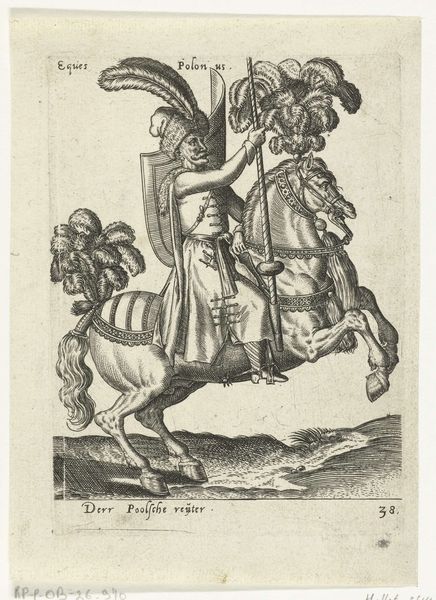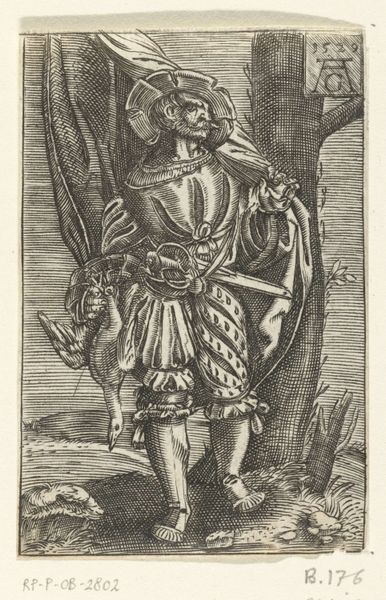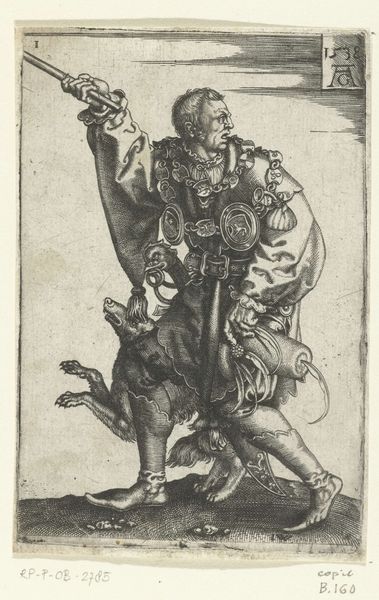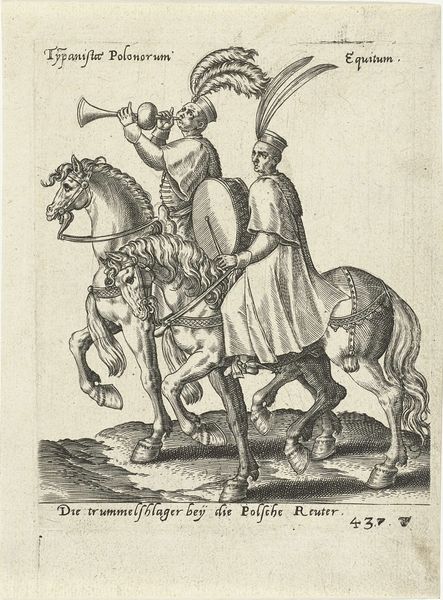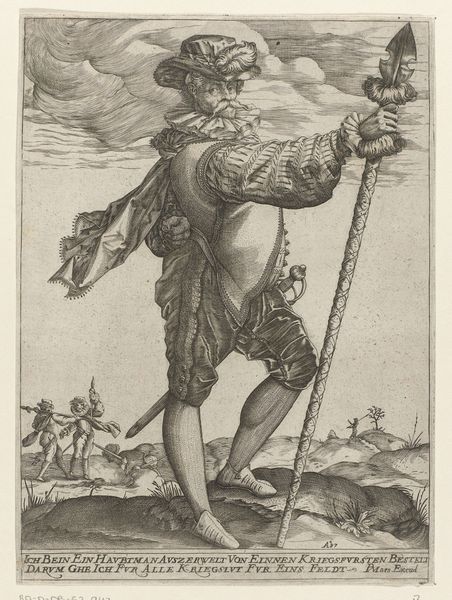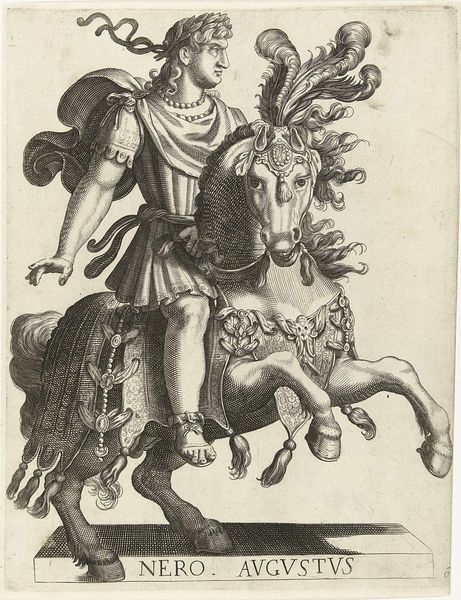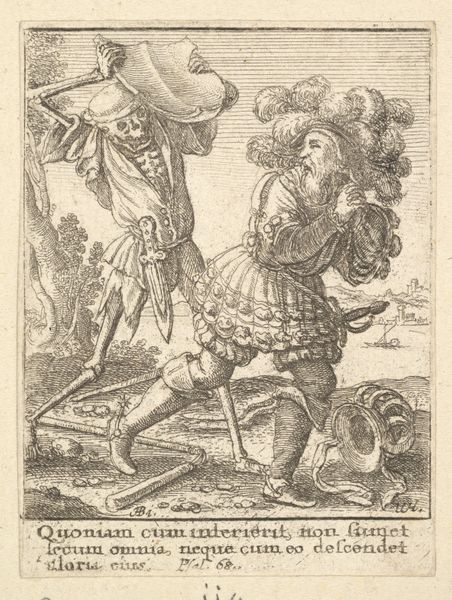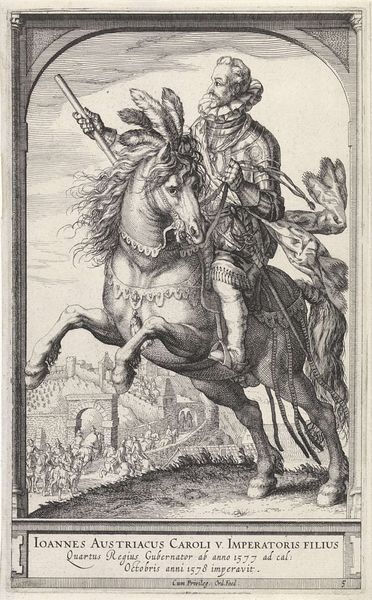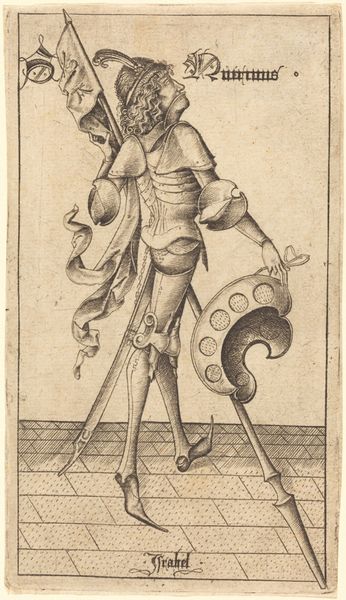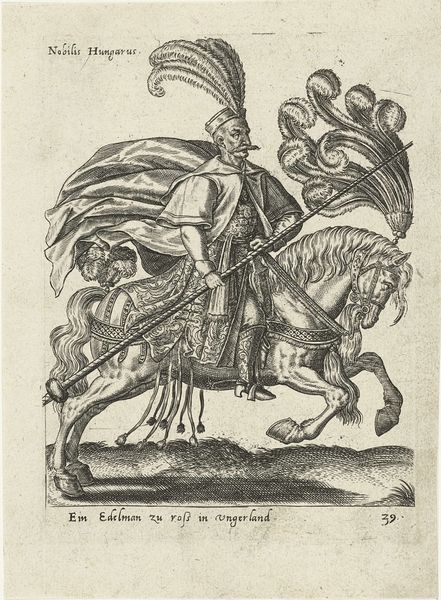
print, engraving
#
portrait
#
baroque
# print
#
old engraving style
#
portrait drawing
#
history-painting
#
engraving
Dimensions: width 158 mm, height 257 mm
Copyright: Rijks Museum: Open Domain
Editor: There's a sort of ghostly presence about this, isn’t there? All grays and blacks. And yet, a commanding figure, undeniably. Like a knight in a dream. Curator: We're looking at "Equestrian Portrait of Ernst, Archduke of Austria." The print, an engraving to be exact, is credited to Hessel Gerritsz and dates sometime between 1595 and 1632. A piece currently held here at the Rijksmuseum. Editor: He seems… constricted. Look at that ruff! Poor fellow. Grand and imposing, of course, astride his steed, but terribly buttoned up. Is that deliberate, do you think? A representation of power and the price you pay for it? Curator: Consider the social climate! Ernst held considerable power in the Habsburg empire, he served as governor in the Netherlands, remember. The piece speaks of leadership during a politically fractured era. Think of the Eighty Years’ War as the backdrop to this piece, for instance. What details stand out for you in relation to its public imagery? Editor: It’s the precision, really. The intricate detailing on the horse's tack, the way the light catches the armor. Gerritsz had tremendous control. But it's also…cold? Deliberate to the point of feeling sterile. Curator: Perhaps that deliberate formality served a clear purpose! As a portrait, especially an equestrian one, this was fundamentally about asserting power and legitimacy. The setting of what appears to be a busy city or palace yard grounds Ernst's power in a concrete location of public visibility and influence. Editor: So less about capturing the essence of Ernst, and more about constructing his image for public consumption. Though I wonder about the people watching from within the architecture, what were their perspectives? And why the dramatic sky—symbolism of turmoil, maybe? Curator: Exactly. Think of this as a piece of political communication. Each line and shadow is crafted to project authority. It reflects how rulers in the Baroque era used imagery to shape their narrative. What do you make of his regal accessories? Editor: It does make you think about the weight of all that armor, all that responsibility… Perhaps that tightly laced ruff *was* intentional. A visible manifestation of the burdens of leadership. Curator: Right! Looking closer into this period helps unveil intricate ways the rulers showcased not just their status, but also tried to control perceptions. Thank you for those keen reflections! Editor: Thanks to you. It’s intriguing how even something that appears so stiff and formal can still whisper about the human condition.
Comments
No comments
Be the first to comment and join the conversation on the ultimate creative platform.
